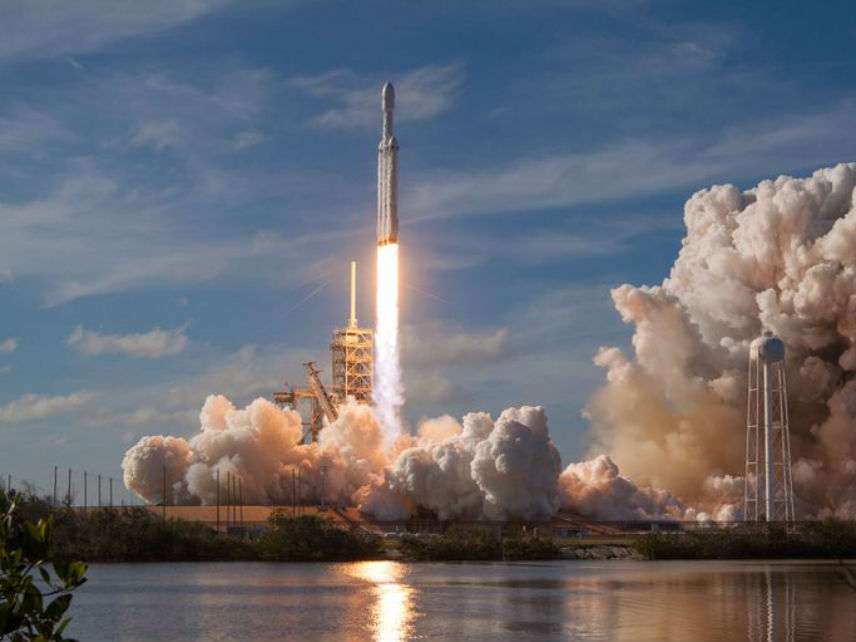SpaceX Heavy Falcon Launch Success for Private Spaceflight
Next stop Mars?

SpaceX, the privately held space launch company yesterday successfully fired off its Falcon Heavy rocket at the Kennedy Space Center. The company points out that the "Falcon Heavy is the most powerful operational rocket in the world by a factor of two, with the ability to lift into orbit nearly 64 metric tons (141,000 lb)–a mass greater than a 737 jetliner loaded with passengers, crew, luggage and fuel."
"I think it's going to encourage other companies and countries to say, 'Hey, if SpaceX, which is a commercial company, and it can do this, and nobody paid for Falcon Heavy, it was paid with internal funds,' then they could do it, too," he told reporters during at post-launch press conference. So far, SpaceX has raised $450 million from private investors and profits from a launch manifest filled with orders from both private and government customers.
The test launch payload included SpaceX founder Elon Musk's red Tesla Roadster with a space-suited mannequin dubbed Starman in the driver's seat. The second stage of the rocket initiated a burn six hours after the launch that aimed to send Starman by Mars in an elliptical orbit around the sun. Apparently, the rocket overshot and the Roadster will be touring through the asteroid belt instead.
The Falcon Heavy's payload capability is two times bigger than that of its American competitor, the United Launch Alliance's Delta IV Heavy Booster. Currently, the newish Russian Soyuz-2 rocket can deliver 8.5 metric tons into low earth orbit. The Russian's Proton rocket can carry 22 metric tons into low earth orbit and Angara-5 launch vehicle will be able to deliver 24.5 metric tons. None of these missiles are reusable.
NASA's Saturn V rocket was the most powerful rocket ever flown successfully. It delivered U.S. astronauts six times to the moon in the late 1960s and early 1970s. It could lift 140 metric tons (310,000 lb) into low earth orbit and deliver 48.6 tons (107,100 lb) to the moon.
After the Falcon Heavy launch, Musk said that the company is now turning its attention to test launching next year the BFR rocket (an acronym that now stands for Big Falcon Rocket) that would be capable of transporting 100 colonists to Mars.
Watch below again the amazing landings of the two reusable Falcon booster rockets at Kennedy Space Center.
